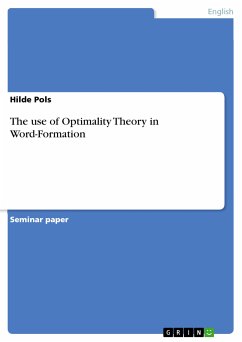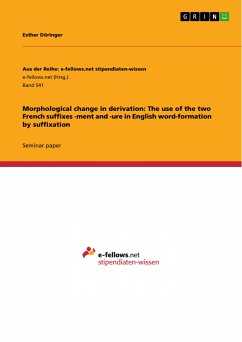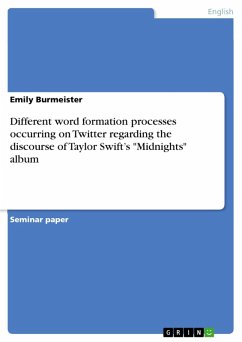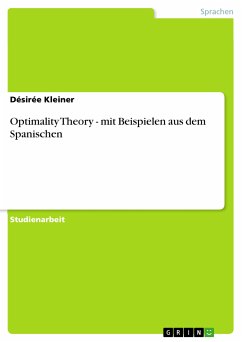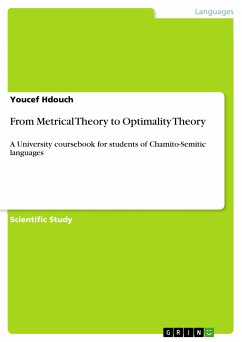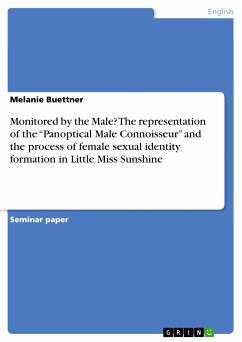Seminar paper from the year 2005 in the subject English Language and Literature Studies - Linguistics, grade: 1,7, University of Freiburg (Englisches Seminar), course: Hauptseminar: Word-Fromation, language: English, abstract: The still rather young Optimality Theory (OT) has found its way into the linguistic discipline of word-formation triggering many new insights and new points of view. This has mainly taken place when analysing the creation of new words in the Englisch language on a morphological basis. This new point of view revealed new possibilities how the speakers decide on which form is right when coining a new word. But how far is this theory developed? Can we leave all formulated rules behind such as in the form of whenxattaches toythenzmust be applied? This term paper will take a closer look at how OT is applied in derivations. After a historical and explanatory chapter on the theory itself two investigations by Ingo Plag ("The phonology of-izederivatives") and Renate Raffelsiefen ("Phonological constraints on English word formation") will be viewed to understand how the theory is applied. Finally the-itysuffixation will be observed on the basis of the results of the preceding two chapters. To attain a textual flow for this thesis the individual constraints used by Plag and Raffelsiefen are summed up and explained in chapter six. Numbers in brackets refer to the page in their article where they have defined the constraint, whilst definitions in angle brackets represent a summary of how the author uses and understands it (only in cases when they did not formulate a definition). The reader may observe that a few constraints are listed under different names; this is dues to the fact that there does not seem to be a uniform naming scheme yet - therefore the constraints are named according to the authors use. For the fourth chapter the Internet was a main reference to build up a corpus of-ityderived words. A search withOnelook®Dictionaryprovided a selection of 1068 tokens of different derivatives after sorting out phrases, loan words and those which have undegone even further derivation (i.e. Negation) from 8560. The choice to use this online dictionary search was made because the website searches through several types of dictionaries in the web, starting from the general ones to the more specialized ones (i.e. linguitical, or medical) as well as collections of neologisms (i.e.www.wordspy.com).
Dieser Download kann aus rechtlichen Gründen nur mit Rechnungsadresse in A, B, BG, CY, CZ, D, DK, EW, E, FIN, F, GR, HR, H, IRL, I, LT, L, LR, M, NL, PL, P, R, S, SLO, SK ausgeliefert werden.

